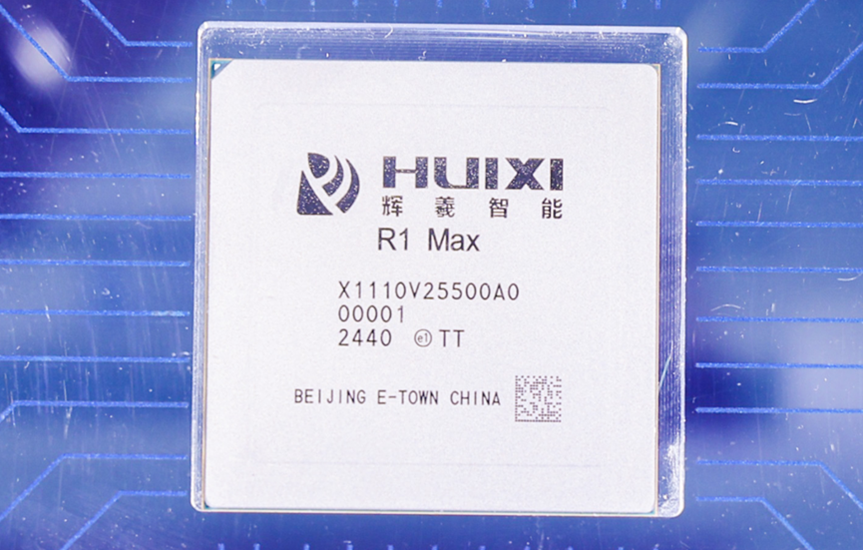
Huixi’s development is a microcosm of Beijing E-Town’s efforts to create a complete ecosystem for intelligent connected vehicles, and it serves as an excellent case of the integration of technological innovation and industrial innovation.
On the evening of September 29, 2024, the R1 chip arrived at Huixi Intelligent’s laboratory.
“Everyone was like parents waiting outside an exam room for their children taking the college entrance exam, while some classmates said we felt more like new fathers waiting outside the delivery room,” recalled Xu Ningyi, founder and CEO of Huixi Intelligent.
That night, no one slept. Engineers responsible for different modules entered the lab one after another to debug. In less than 12 hours, key pathways such as Boot, CPU, and DDR were successfully established, and with the complete output of Linux logs, the R1 was successfully powered on.
The subsequent work also went very smoothly, with each milestone being achieved ahead of schedule:
In 72 hours, all sub-module software tests were passed;
On the 4th day, algorithm inference deployment began;
On the 5th day, the production of the autonomous driving domain controller was completed and ready.
On the 12th day, the still-warm R1 was handed over to partner Jingwei Hengrun.
On October 17, 2024, at the World Intelligent Connected Vehicles Conference, Huixi officially released this high-end intelligent driving chip, the Guangzhi R1, which is manufactured using a 7nm process and has a computing power of 500 TOPS.
At the same time, it also set the record for the fastest self-developed 7nm high-performance automotive-grade intelligent driving chip in the industry.
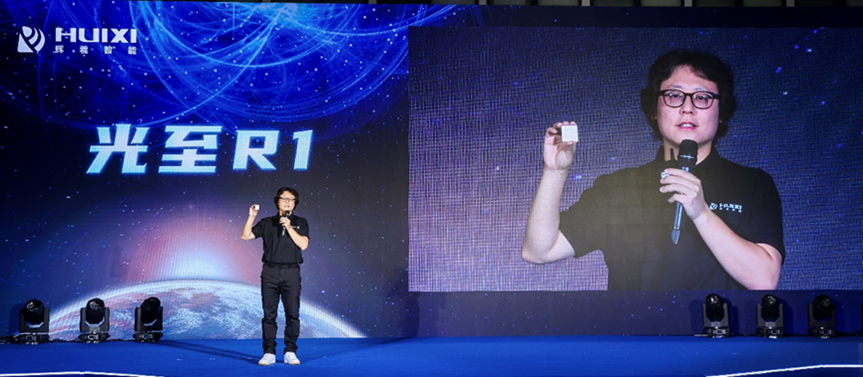
Xu Ningyi, founder and CEO of Huixi Intelligent
At this point, it had been less than three years since Huixi was established.
How did this shining industry newcomer step onto the track of high-performance automotive-grade chips and emerge? What challenges did they encounter during the product development cycle? What support and assistance helped them weather the storm?
“New Gravity of Autonomous Driving in Yizhuang” — the 2024 Beijing Intelligent Connected Vehicle Industry Exploration Program, this issue features the company — Huixi Intelligent.
01
Challenging the High-Performance Chip Track: Dedicating to Difficult but Right Choices
The domestic autonomous driving industry started in 2013, entering a period of rapid development from 2016 to 2018, with the backbone of autonomous driving companies being established one after another, and capital flooding into this star track. Around 2020, the external market environment became increasingly complex, while issues such as technological bottlenecks and business models in autonomous driving remained unresolved, leading to a cooling period in the investment market, and the industry gradually returned to rationality. Today, after several storms, we have finally welcomed the first wave of IPOs.
However, looking back at the development history of high-end intelligent driving chips, it tells a different story.
In 2021, affected by the global market environment and the pandemic, many domestic industries faced a common “chip shortage” problem, with the automotive chip industry, closely related to the national economy and daily life, being pushed to the forefront, highlighting the importance of self-supply of automotive chips. At the same time, the trend of high-end intelligent driving became increasingly clear, and the potential demand for high-performance chips began to emerge. To this day, the domestic automotive industry still has a high demand for domestically produced high-performance high-end intelligent driving chips.
Huixi Intelligent, established in 2022, seems to have entered the market late, but in fact, it is perfectly timed.
At the beginning of Huixi’s establishment, there was no consensus in the industry on when the turning point for automotive intelligence would arrive. However, developing a vehicle-grade SoC chip takes at least two to three years. Only by predicting development trends at the outset can new products be created that meet future market needs.
“Our team unanimously believed in 2022 that 2023-2025 would be an important period for the implementation of high-end intelligent driving, and that high-performance chips, as the ‘brain’ of intelligent driving, would become a necessity, which is where we could leverage our independent R&D capabilities,” said Yang Yue, co-founder of Huixi Intelligent.
The ability to make forward-looking judgments and decisive decisions in the industry is closely related to the backgrounds and experiences of several founders.
Xu Ningyi, founder and CEO of Huixi Intelligent, studied at Tsinghua University for his bachelor’s, master’s, and doctoral degrees, focusing on domain-specific computing, computer architecture, parallel computing, and machine learning systems. From 2017 to 2022, he served as the chief architect of Baidu’s Intelligent Chip Department and CEO of Chip Company Zhenliang Intelligent, leading the development of Baidu’s Kunlun chip, which is China’s first fully functional AI chip for cloud applications and the first domestically developed AI chip to be widely used in the industrial sector.
Co-founder Zhang Jianyong also holds a bachelor’s and master’s degree from Tsinghua University and a PhD from Shanghai Jiao Tong University, with extensive experience in the autonomous driving field. As a veteran of NIO, he has been leading the construction of NIO’s autonomous driving system since 2015, overseeing the mass production of the NIO Pilot autonomous driving assistance system and completing the development of the NT1 and NT2 autonomous driving platforms.
Another co-founder, He Guanghui, is also a PhD from Tsinghua University, engaged in research on high-efficiency digital system chips and high-performance chip interconnect technology. From 2007 to 2009, he worked at the US company LSI Corporation, focusing on the development of terrestrial digital TV demodulation and decoding chips.
For such a founding team with rich experience in the chip and autonomous driving fields, choosing the high-performance high-end intelligent driving chip track is a difficult but correct decision.
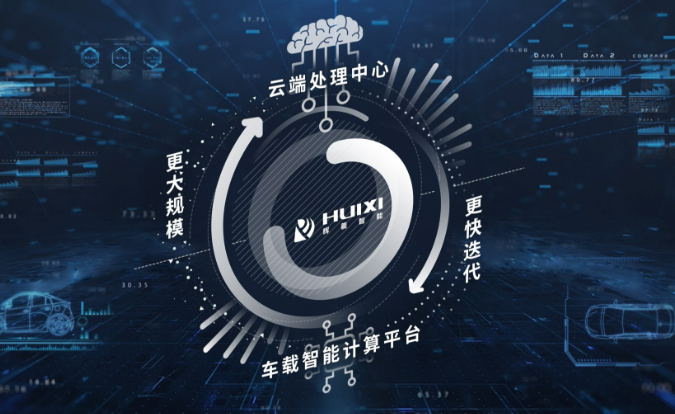
On one hand, they are under tremendous pressure. The advantages of overseas chip giants are very obvious; even now, NVIDIA’s OrinX chip remains the mainstream choice for high-end intelligent driving. Adding Mobileye, TI, and other companies, foreign chip solutions present an overwhelming advantage, with a market share exceeding 80%. On the other hand, with the increasingly complex international chip supply chain environment and the rise of the domestic new energy vehicle industry chain, there is a huge market opportunity for domestic high-end intelligent driving chip companies.
In 2022, the field of domestic high-performance intelligent driving chips was still an industrial blank. The threshold for chip entrepreneurship is very high, and companies choosing to enter the chip industry all have strong backgrounds. However, among the shining stars, Huixi Intelligent remains one of the brightest newcomers.
In June 2022, just two months after its establishment, Huixi Intelligent completed its first round of angel financing of several hundred million RMB, with investments from Yuan Sheng Capital, NIO Capital, Zhenge Fund, Infinite Fund SEE Fund, and Yunjiu Capital.
In December 2022, Huixi successfully completed its second financing round within the year, with 17 institutions competing for shares. Led by Shunwei Capital and Xiaomi Group, with participation from Guoqi Investment, Kairui Fund, Qiji Chuangtan, Jingshan Jiang Chuang, NIO Capital, and Yunjiu Capital.
Among them, the leading investor, Xiaomi Group, had just established an automotive factory in Beijing E-Town in October 2022. Following closely was Guoqi Investment, backed by the national-level industrial think tank, the National Intelligent Connected Vehicle Innovation Center, also from Beijing E-Town.
In fact, with over 10 years of experience in advanced process chip design, algorithm and toolchain development, automotive systems, and product delivery, the star founding team of Huixi Intelligent has been hailed as “the global automotive chip company with the highest angel round financing amount,” which attracted the attention of Beijing E-Town, and both sides began communication as early as July 2022.
One is a startup that has attracted significant industry attention, and the other is an innovative land with an increasingly prosperous industrial ecosystem. The intersection and connection of the industry gradually opened the curtain for the mutual journey of Huixi Intelligent and Beijing E-Town.
02
When Technology Moves from the Laboratory to Engineering: Star Team Also Faced Difficulties
After more than a year of in-depth communication, Beijing E-Town conducted a comprehensive assessment of Huixi’s R&D capabilities, organizational management model, and market potential.
Yang Yue stated, “During our engagement with Beijing E-Town, not only did they help us continuously improve our operational management capabilities, but more importantly, they provided quick connections to first-tier automakers like Xiaomi and Mercedes-Benz, as well as professional think tanks like the Automotive Society and the National Innovation Center, which closely follow top-level trends. Autonomous driving vehicles can be seen everywhere on the streets, and the companies behind these vehicles may be right next door. This kind of experience and discussion available at any time continuously validates and deepens our understanding and judgment of industry trends.”
By the end of 2023, Huixi Intelligent’s headquarters settled in Beijing E-Town.
As a chip startup in the early development stage in E-Town, the most challenging issue Huixi faced at that time was the high R&D investment.
Creating chips is like navigating a complex maze with only one correct path; each trial and error means starting over and incurring more R&D investment. For a technology-intensive 7nm process chip, just one tape-out can cost hundreds of millions. Regardless of how high the R&D capabilities are, continuous failures and investments are required until the path is narrowed down to a certain range before it is possible to successfully find the way out. The further one goes down this track, the lonelier it becomes; many peers have chosen to exit halfway due to insufficient R&D investment.
Although after the angel round and angel+ round financing, Huixi Intelligent’s total financing has reached several hundred million, it still lacks confidence for creating high-performance high-end intelligent driving chips.
Meanwhile, the capital market, which highly pursues investment returns within a certain period, has seen investment in the autonomous driving industry drop to a freezing point since 2023. No matter how strong the company’s technology and experience are, if there is uncertainty in product development, obtaining financing becomes increasingly difficult.
Thus, the advantages of government funds focusing on major strategic industries and adopting long-term investment return models have become apparent. Since 2023, Beijing E-Town has gradually established a fund system of “industrial upgrade fund + special sub-fund + market-oriented sub-fund,” with a financial service model that invests early, invests small, invests long-term, and invests in hard technology basically taking shape.
Upon learning about Huixi’s R&D challenges, relevant personnel from Beijing E-Town proactively followed up, organized local investment platforms, conducted in-depth research and analysis of the company, and launched special fund investments to help Huixi overcome difficulties.
“At that time, we were still in the early stages of chip R&D, which required a lot of resource investment. Although we could internally predict the R&D landing situation, as an industry guide, Beijing E-Town was able to conduct rational analysis and arrive at similar industry predictions, ultimately providing comprehensive support to resolve our urgent needs, which not only enhanced our confidence in the market but also boosted the morale of our team,” Yang Yue reflected.
Having sufficient R&D investment is just the first step in a long journey.
To independently design and develop a chip, strong technology and industrial collaboration are also crucial.
After completing the design of the intelligent computing platform system board, how to make the system board compatible with smart vehicles that have not yet been launched into the market became a challenge for Huixi.
What Xu Ningyi did not expect was that the municipal autonomous driving office quickly helped them connect with frontline engineers and technical personnel from Xiaomi Automotive, and both sides had very detailed discussions.
As a strong supporter behind Huixi, the enterprise service manager provided by Beijing E-Town participated in important stages of Huixi’s development, continuously connecting with Huixi’s needs and pain points in product R&D, market expansion, and industrial chain ecosystem cooperation, helping Huixi solve problems and deepening the collaborative relationship within the industrial chain.
“How many interfaces need to be placed on it? How is the power supply? How is the heat dissipation? What is the shape? Our judgment on the models for the next two to three years became clear,” Xu Ningyi recalled.
Subsequently, the series of work such as chip testing and certification also had Beijing E-Town facilitating connections.
In October 2024, at the Huixi press conference, Xu Ningyi held up the chip, specifically asking the camera to give a close-up of the chip to showcase the words “Beijing E-Town, China.” Beijing E-Town is the English name of Yizhuang.
“Since last year when we came to E-Town, I feel like we have grown from taking our first steps to gradually maturing. Every challenge along the way has received strong support and assistance from E-Town, and we are very confident in continuing our innovation and R&D work,” Xu Ningyi said.

It can be said that Huixi’s ability to meet the needs of automakers early, conduct product testing and validation, and solve funding issues is inseparable from the strong assistance of Beijing E-Town.
Therefore, it is not difficult to understand why the words “Beijing E-Town” are printed on Huixi’s significant first chip.
This E-Town “chip” fills the gap of Beijing’s self-developed high-performance high-end intelligent driving chips and marks a key step for Huixi in the field of intelligent driving.
03
Creating a Milestone in Independent Innovation: One Chip Equivalent to Two, Accelerating the New Speed of the Automotive Chip Industry
Xu Ningyi said, “Our goal is to make the Guangzhi R1 the fastest mass-produced high-performance intelligent driving chip in China, and the best usable intelligent driving chip in the industry.”
Having the courage to set this goal shows Huixi’s confidence in the product strength of the R1.
Huixi positions the chip architecture as a “domain-general architecture,” which can handle various new model structures, allowing users to adapt various algorithms freely and efficiently meet computational needs.
Although “general” does not mean that the R1 is ordinary.
The 7nm process Guangzhi R1 chip integrates 45 billion transistors, features an 8-core SIMT architecture, and provides over 500 TOPS of deep learning computing power, equivalent to two NVIDIA Orin chips, capable of processing data equivalent to a regular laptop’s continuous work for 50 years in just one second.
The CPU computing power exceeds 420k DMIPS, with 24 Arm Cortex-A78AE cores built-in, leading the industry.
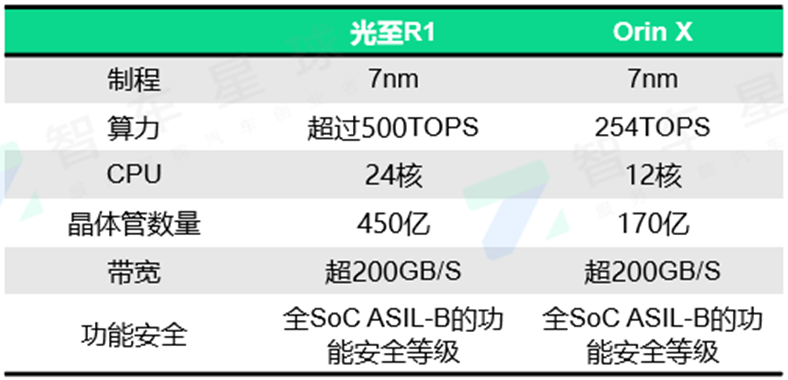
From the comparison of key parameters with NVIDIA Orin X, it is clear that the Guangzhi R1 maintains the same level as Orin X in terms of process and functional safety, while demonstrating greater advantages in computing power and CPU performance.
At the press conference, Xu Ningyi used the accelerated Transformer algorithm model as an example, showing that the performance improvement capability of Guangzhi R1 is 9 times that of OrinX, and in some configurations, it even reached nearly 20 times the acceleration.
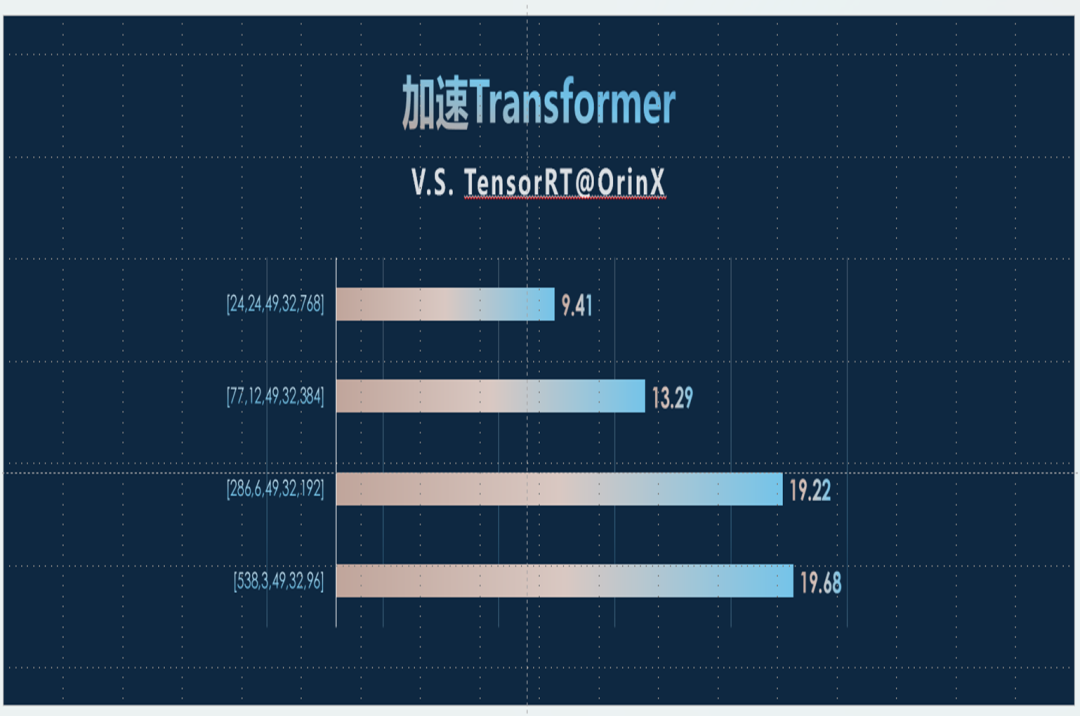
It can be said that in the high-end intelligent driving sector dominated by foreign giants like NVIDIA, Huixi has carved out a path of independent innovation through the creation of more extreme products, becoming an important force in changing the market landscape for high-end intelligent driving chips.
The difficulty of this achievement is evident, and Xu Ningyi likened this breakthrough to climbing the 7500-meter-high Muztagh Ata peak.
Reaching this “peak” is just the beginning; next, Huixi has much work to do in product delivery and helping customers further reduce costs and increase efficiency.
But everything is progressing in an orderly and rapid manner.
Yang Yue revealed to us that by the end of November, vehicles equipped with the R1 chip and advanced intelligent driving capabilities have already started running on the roads.
04
Embarking on a Grand Journey: Activating a Broader AI Market in Beijing E-Town
Although the current business focus is on automotive intelligence, Yang Yue stated that the R1 has great potential.
“In addition to automotive intelligence and semiconductors, Huixi has another keyword, which is AI. Currently, the two most focused application scenarios for AI are automotive and embodied intelligence.”
Both require multimodal perception capabilities, the ability to understand and predict scenarios, and the ability to plan and control the next actions within those scenarios.
The two scenarios are inherently similar.
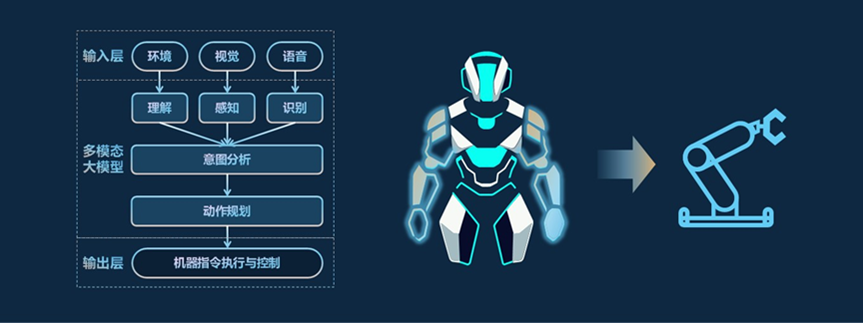
Coincidentally, these three keywords have a very good gathering effect in Beijing E-Town.
Currently, E-Town is promoting a high-quality development strategy, forming a “44637” development system.
The first “4” refers to the four national strategies of integrated circuits, high-level autonomous driving, innovative applications of information technology, and data infrastructure.
The second “4” refers to the four leading industries of high-end automobiles and new energy intelligent vehicles, biotechnology and health, new generation information technology, and robotics and intelligent manufacturing.
“The field of automotive intelligence and embodied intelligence is a huge scenario for AI and semiconductor applications. Beijing E-Town has formed a gathering of related technologies, talents, and funds, and is also a stage for product testing and application scenarios, while providing an industrial atmosphere and cooperation opportunities, offering Huixi comprehensive support in terms of industry, product testing, and application scenarios,” Yang Yue told Zhiche Xingqiu. “Moreover, the R1 is also applicable for edge computing inference in the integrated vehicle-road-cloud system, holding infinite potential in the construction of smart city infrastructure.
In the context of the integrated vehicle-road-cloud development driven by the “dual intelligence” approach, Beijing E-Town is also a benchmark case for leading industry innovation.
“We believe that our products, combined with the resource endowments of Beijing E-Town, can further enhance the support of the domestic supply chain and create a domestically competitive chip brand with international competitiveness,” Yang Yue said.
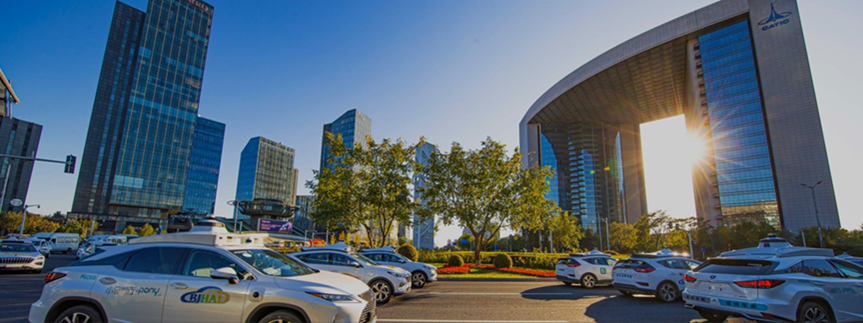
It can be said that Huixi’s development is a microcosm of Beijing E-Town’s efforts to create a complete ecosystem for intelligent connected vehicles, and it serves as an excellent case of the integration of technological innovation and industrial innovation.
On this vibrant land of Beijing E-Town, Huixi’s story continues. Their innovations and efforts bring not only technological breakthroughs but also an exploration and innovation towards a better future empowered by advanced technology.
What unique mark this E-Town chip will leave on the path of intelligence will only be revealed after it is put into vehicles; let us wait and see.
Author | Deng Ya
Editor | Jiang Linlin